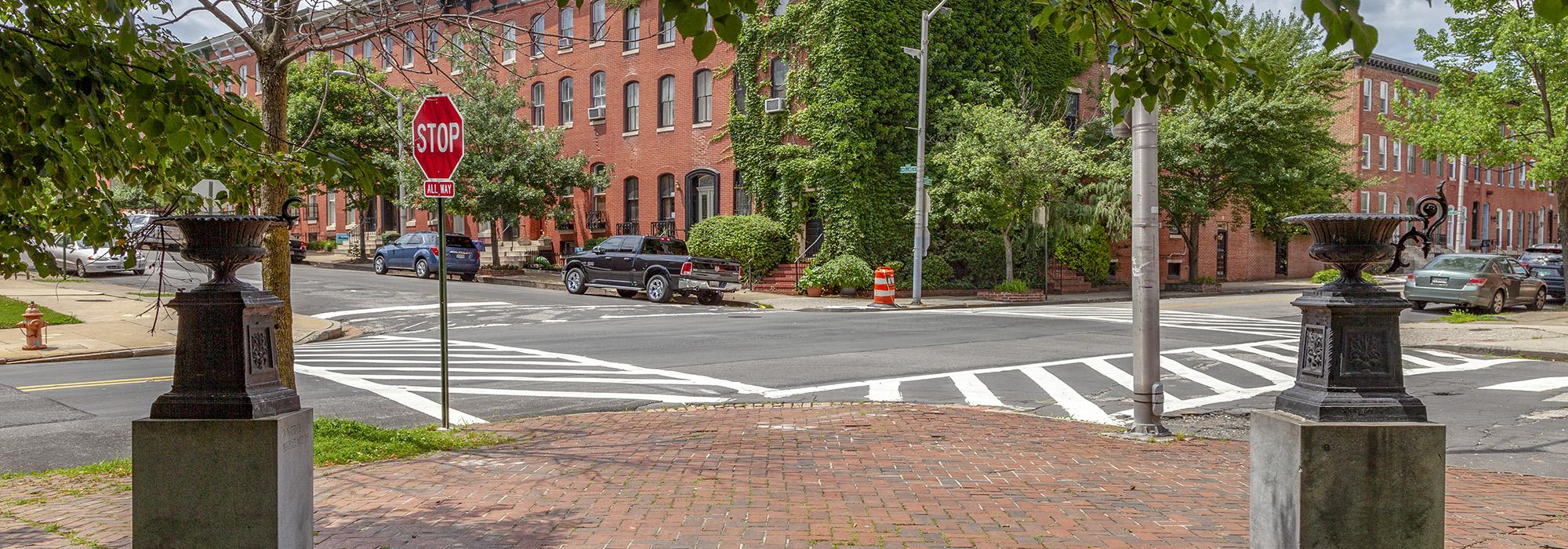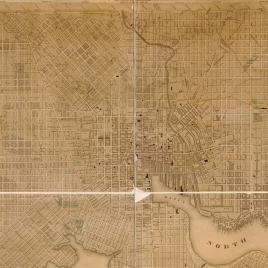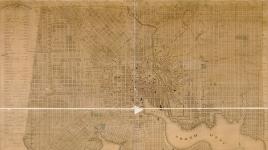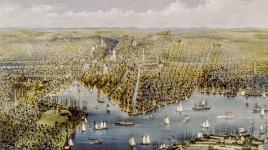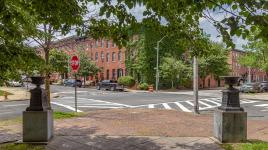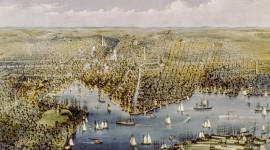Pioneer Information
Born in London, England, Poppleton was apprenticed to the Honorable Company of Vintners at the age of fifteen. In 1805 he established a surveying business in Bloomsbury Square with architect Henry Ashely Keeble. The partnership terminated after two years, and, following a short time in debtor’s prison, Poppleton immigrated to America with his wife, Anne, arriving in Baltimore in 1812. In April of that same year he responded to requests by the Baltimore City Commission for a surveyor to map the city and create a street plan. His submission was selected, but he faced almost immediate opposition from rival surveyors and Democratic-Republican commissioners who resented Poppleton’s friendship with the Federalist John Eager Howard. Antagonism between the commissioners and the surveyor continued to grow until he abandoned his efforts in 1812. Poppleton then moved to New York City to assist Edward Fulton and Eli Whitney in designing an underground sewer on Canal Street. His work on Canal Street was well received, earning him the position of city surveyor. In this position, he designed a map of lower Manhattan that was used throughout the nineteenth century to delineate streets and property lines. Following major land annexations in 1818, the Maryland Legislature established a new state commission to recommence work on Poppleton’s original plan for Baltimore. Commissioners John Eager Howard and Joseph Townshend requested that Poppleton return to the city, where he completed his survey in 1818. Poppleton re-mapped the city’s extant streets and established a plan for future urban expansion. He would also survey Howard’s private estate and lay out what would become the Mount Vernon Historic District, before working on projects with the Baltimore and Ohio Railroad, including its route through the city, along Pratt Street. Although he died impoverished at the age of 72, Poppleton’s name lives on in the eponymous Poppleton Street, which bisects the site of B&O Railroad Museum.



